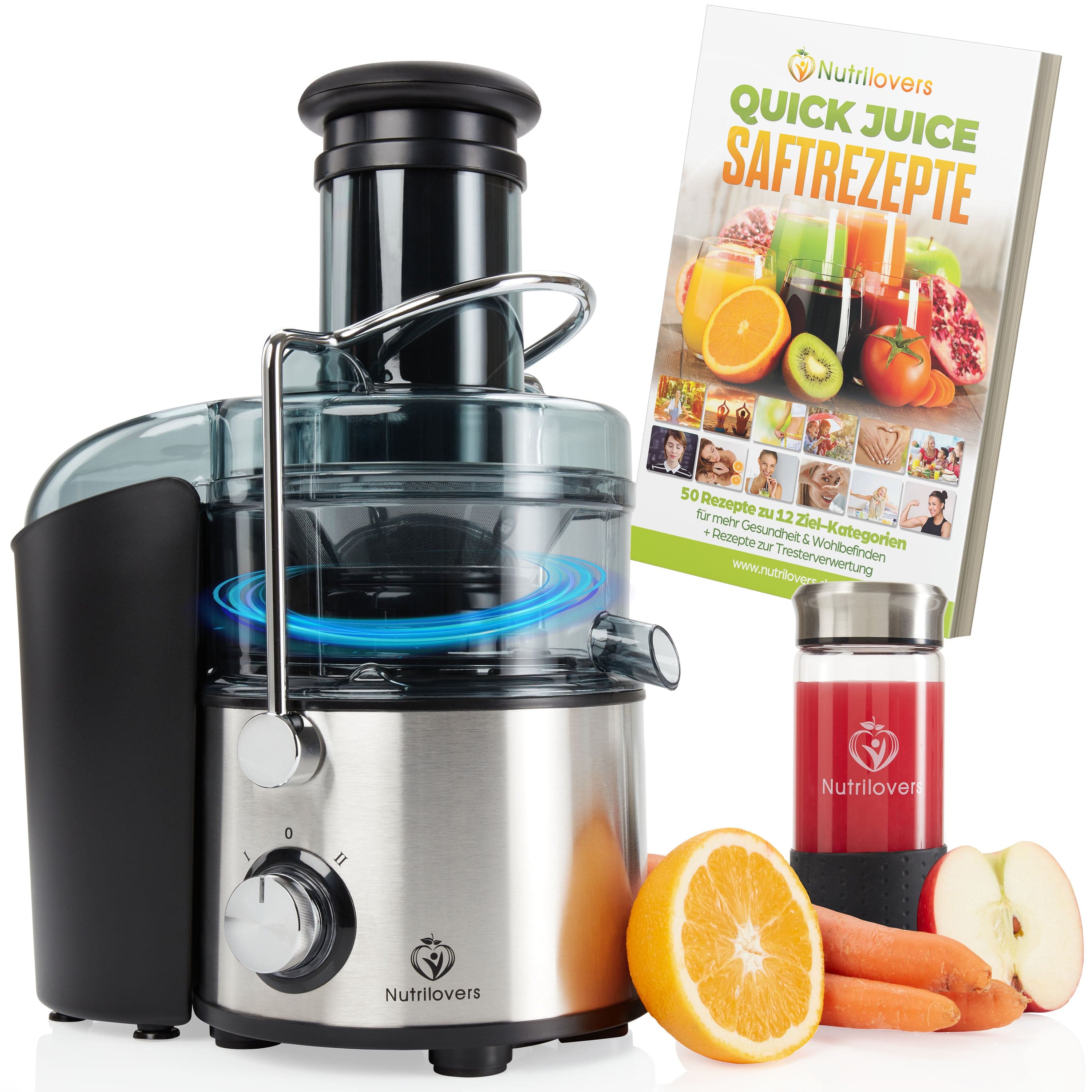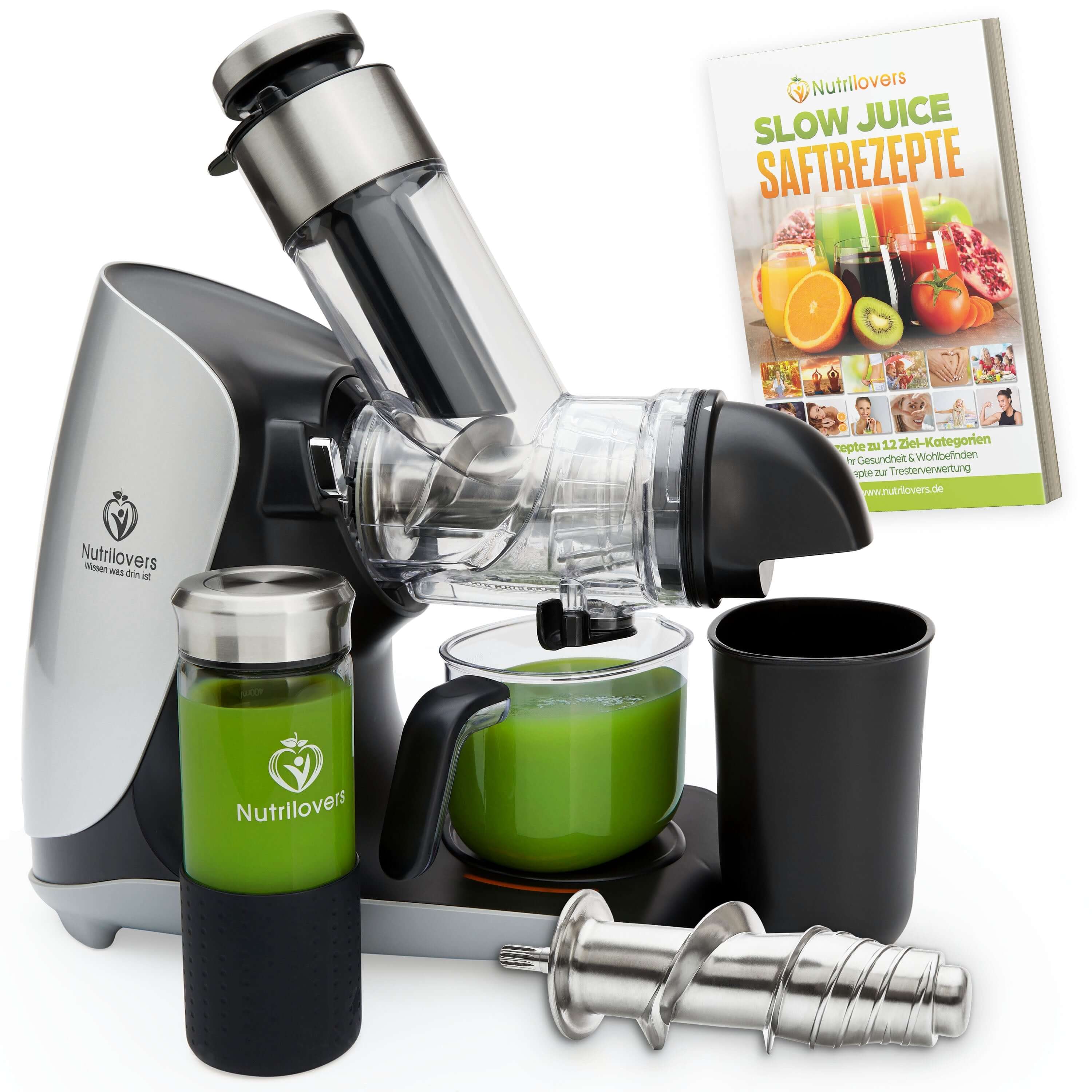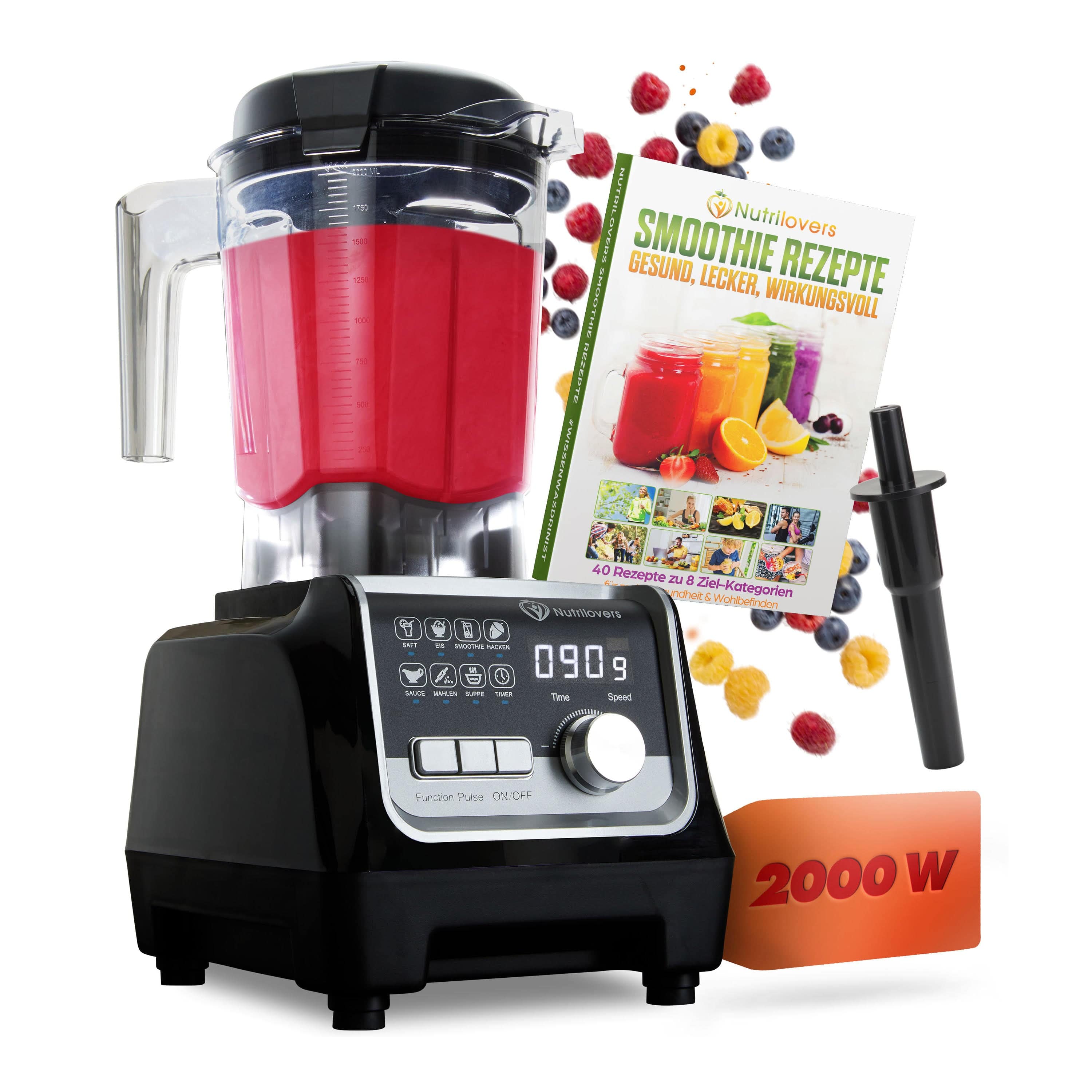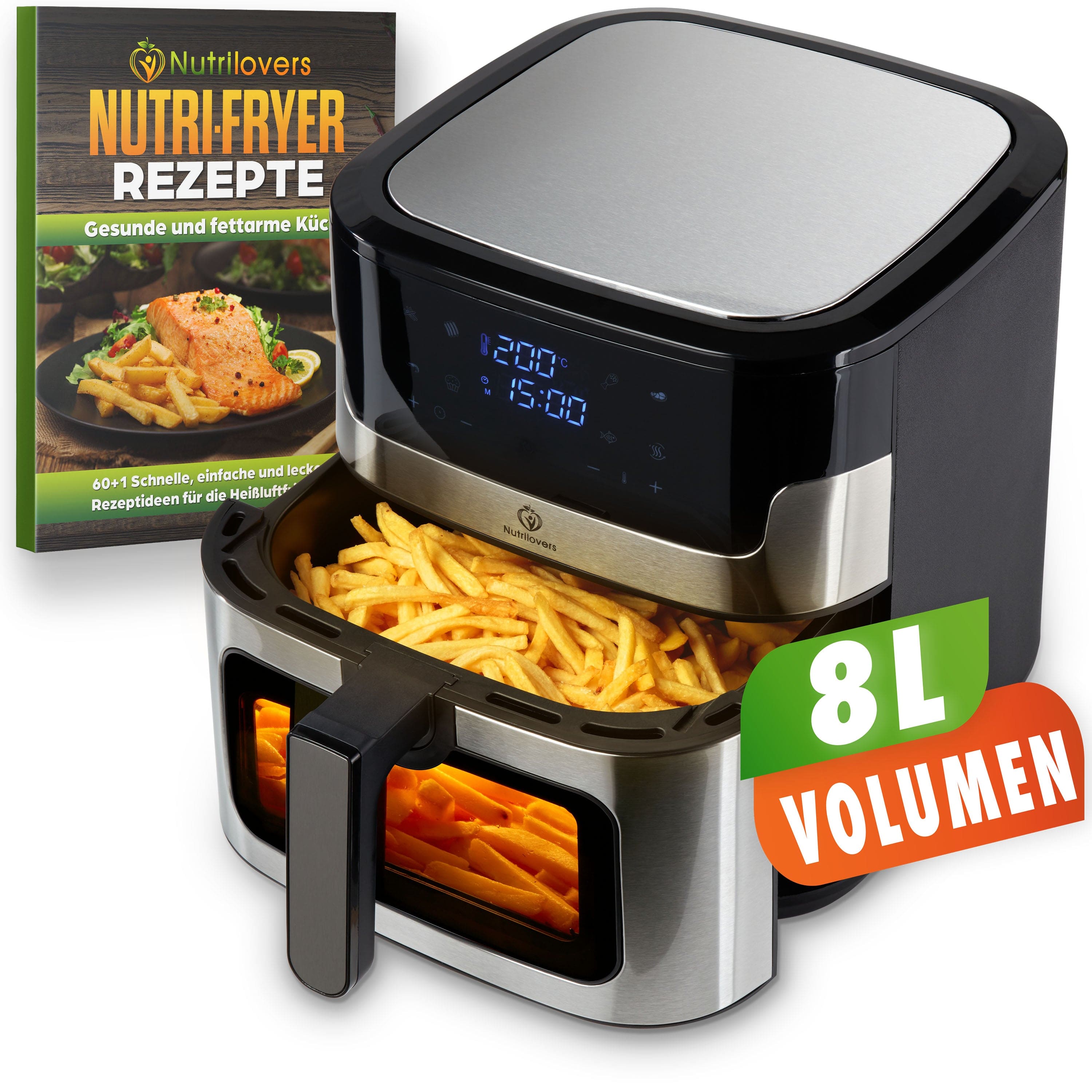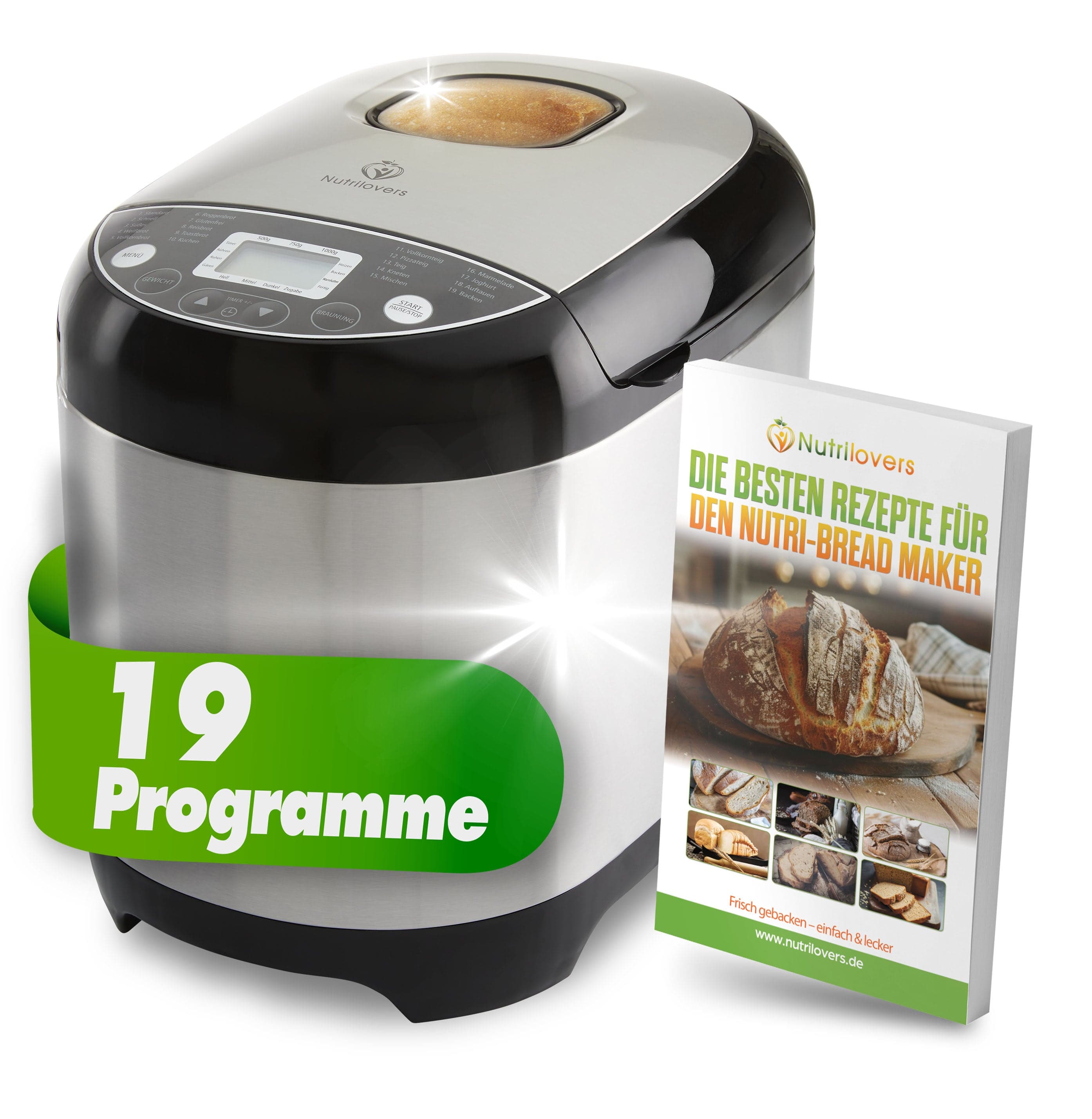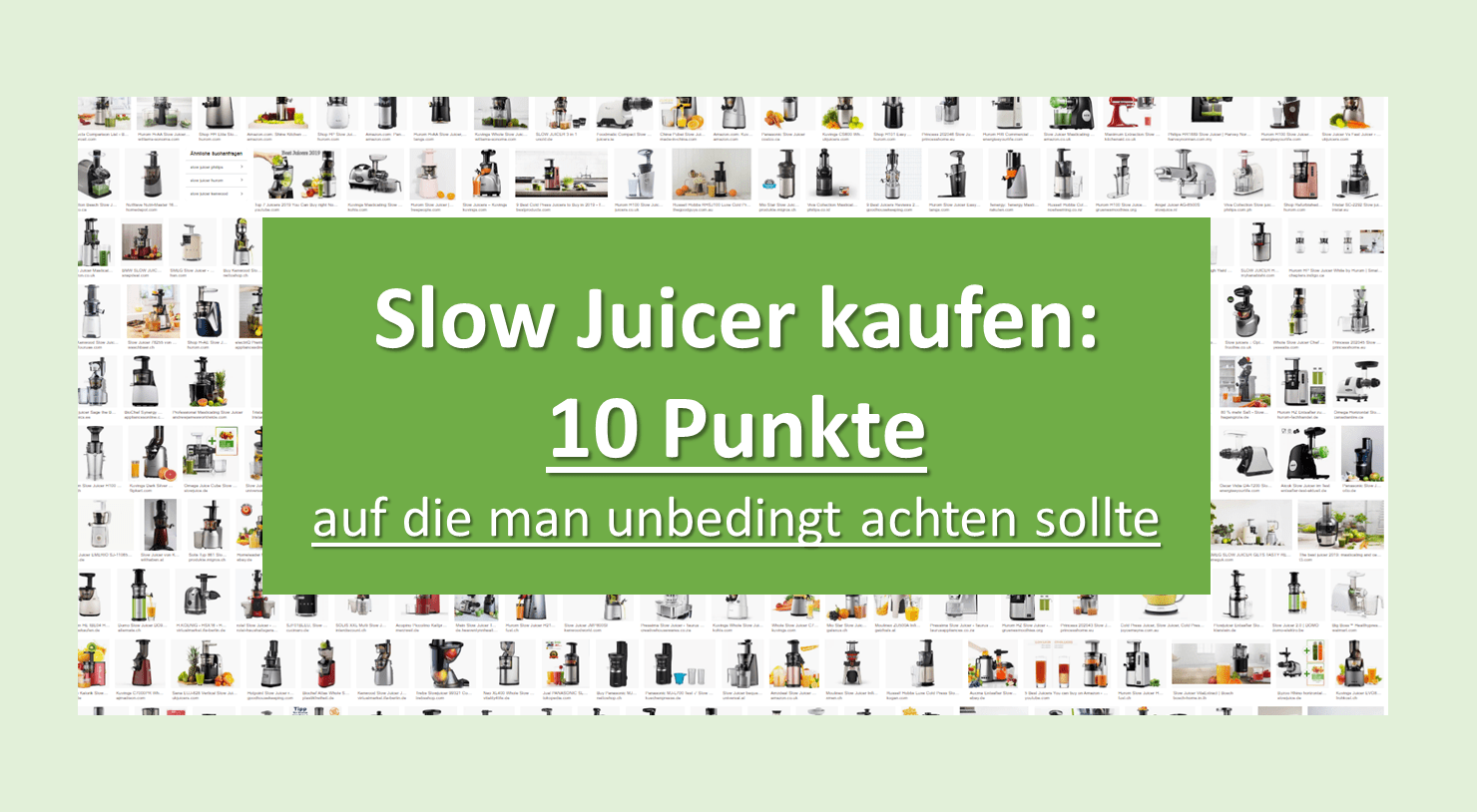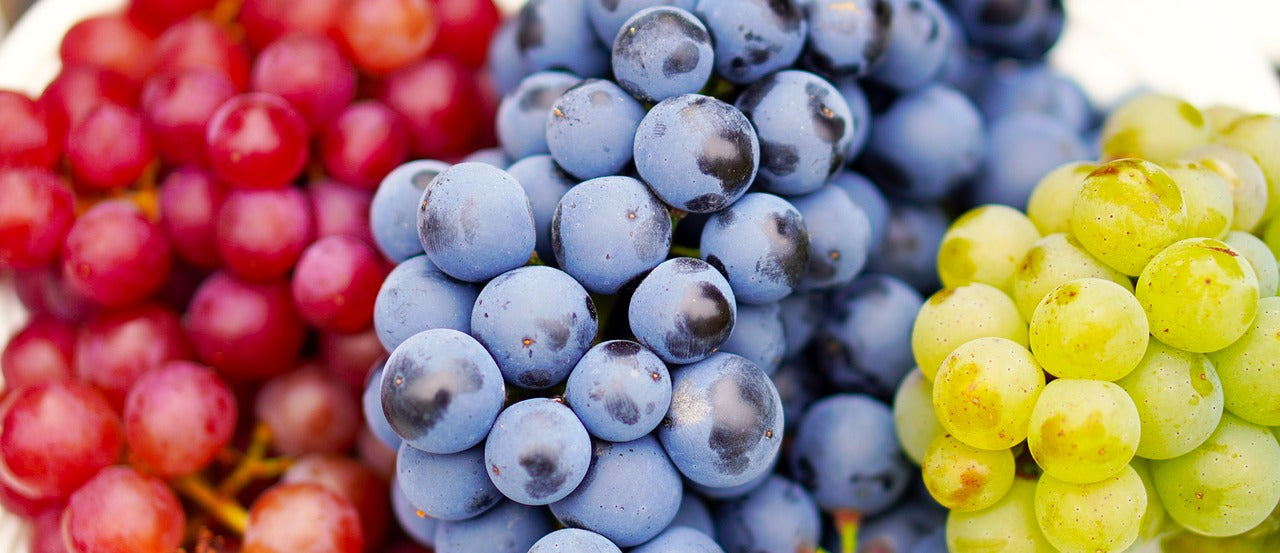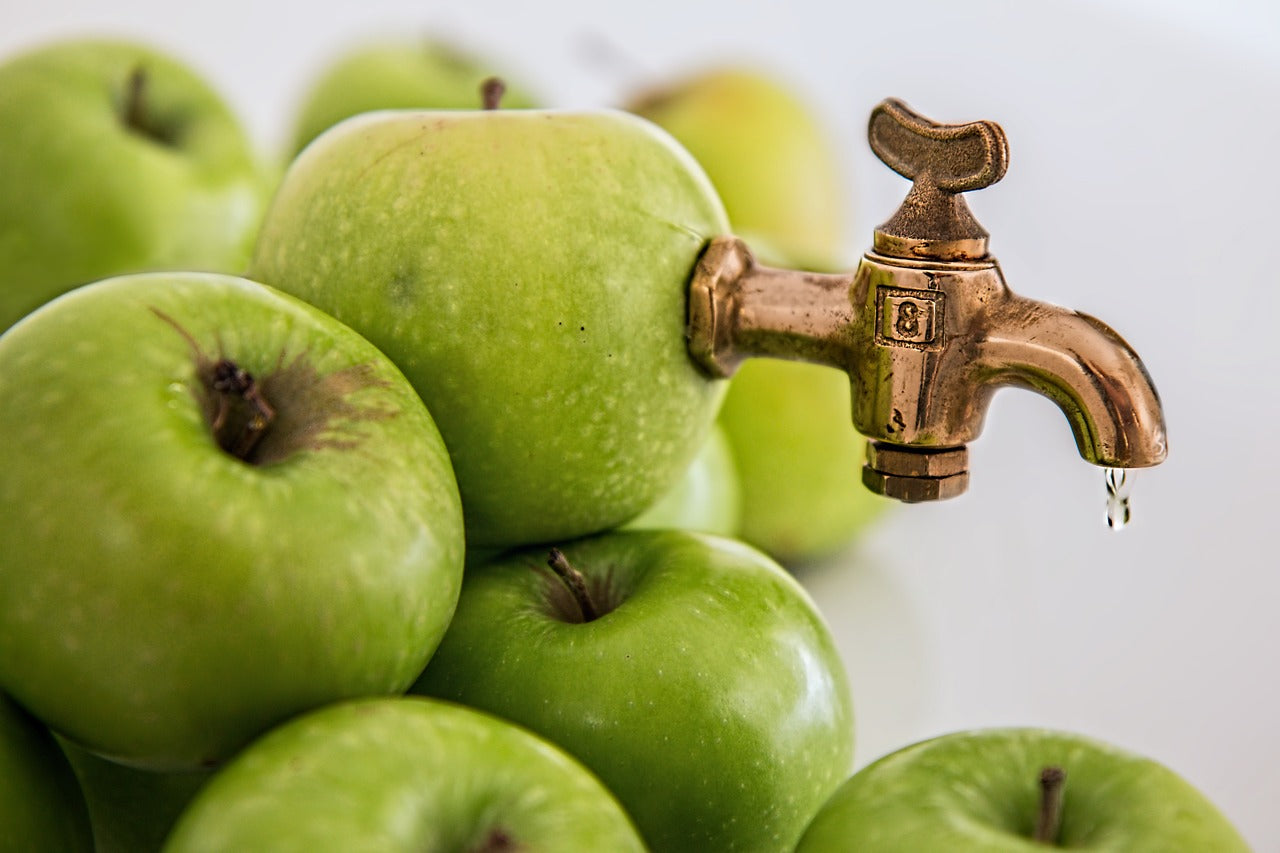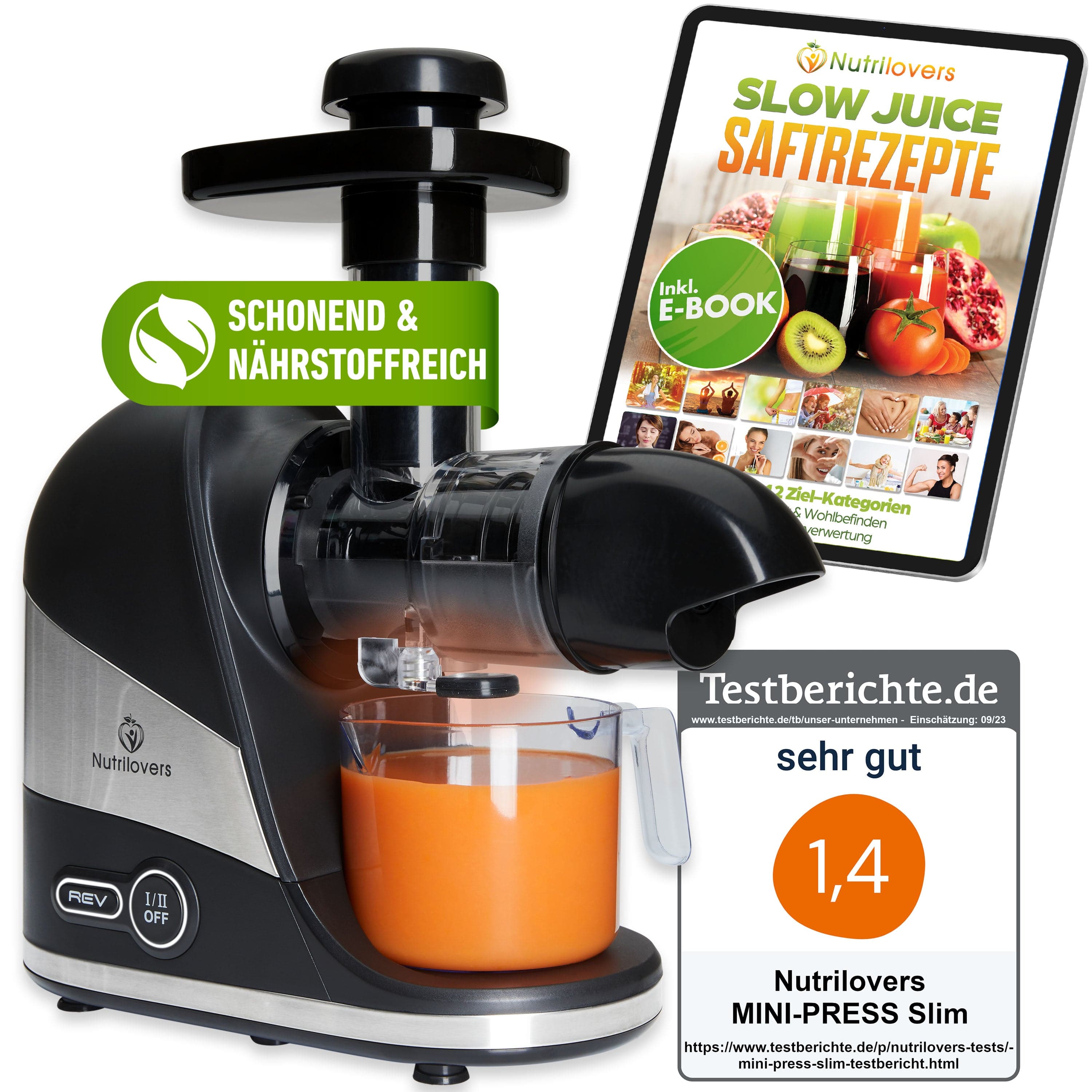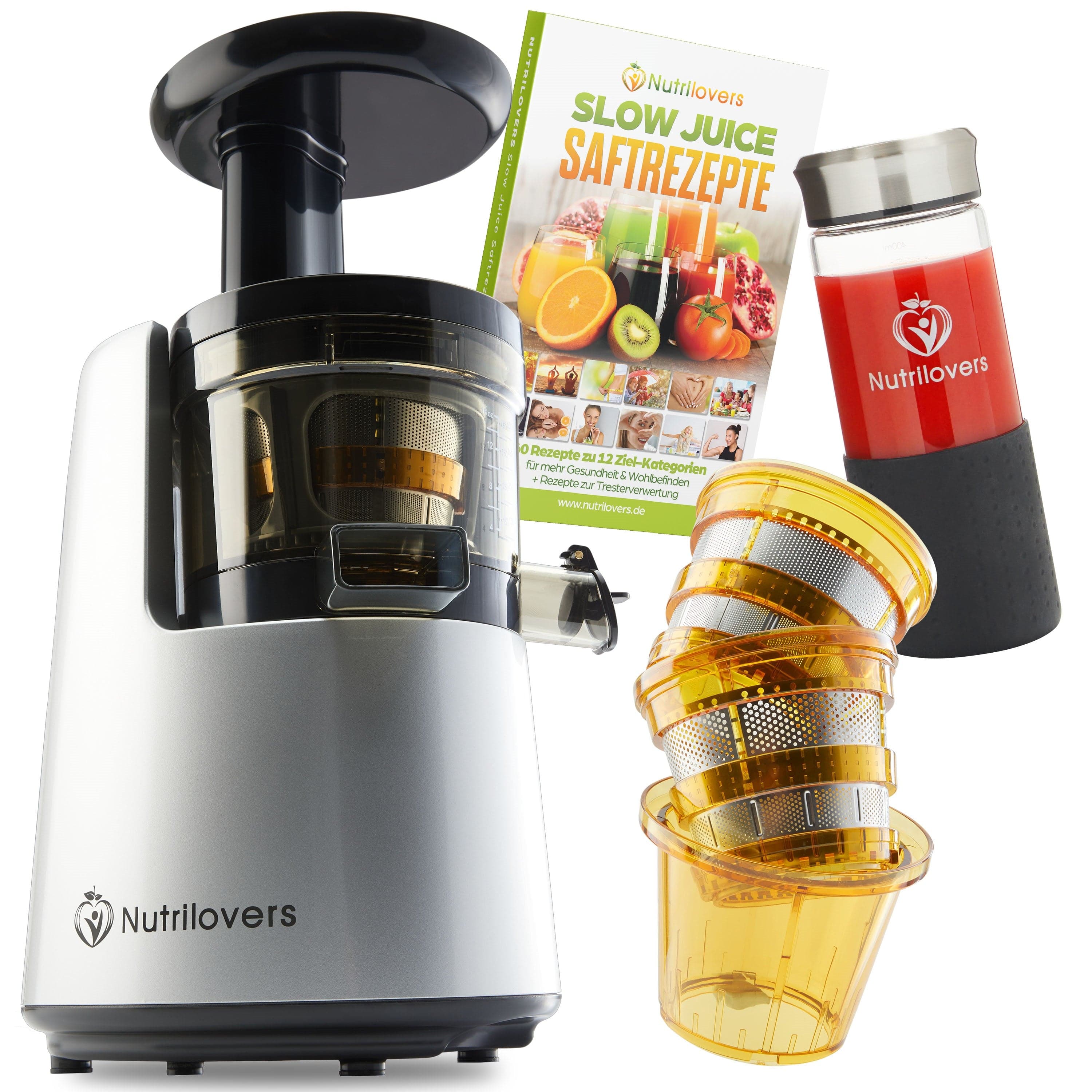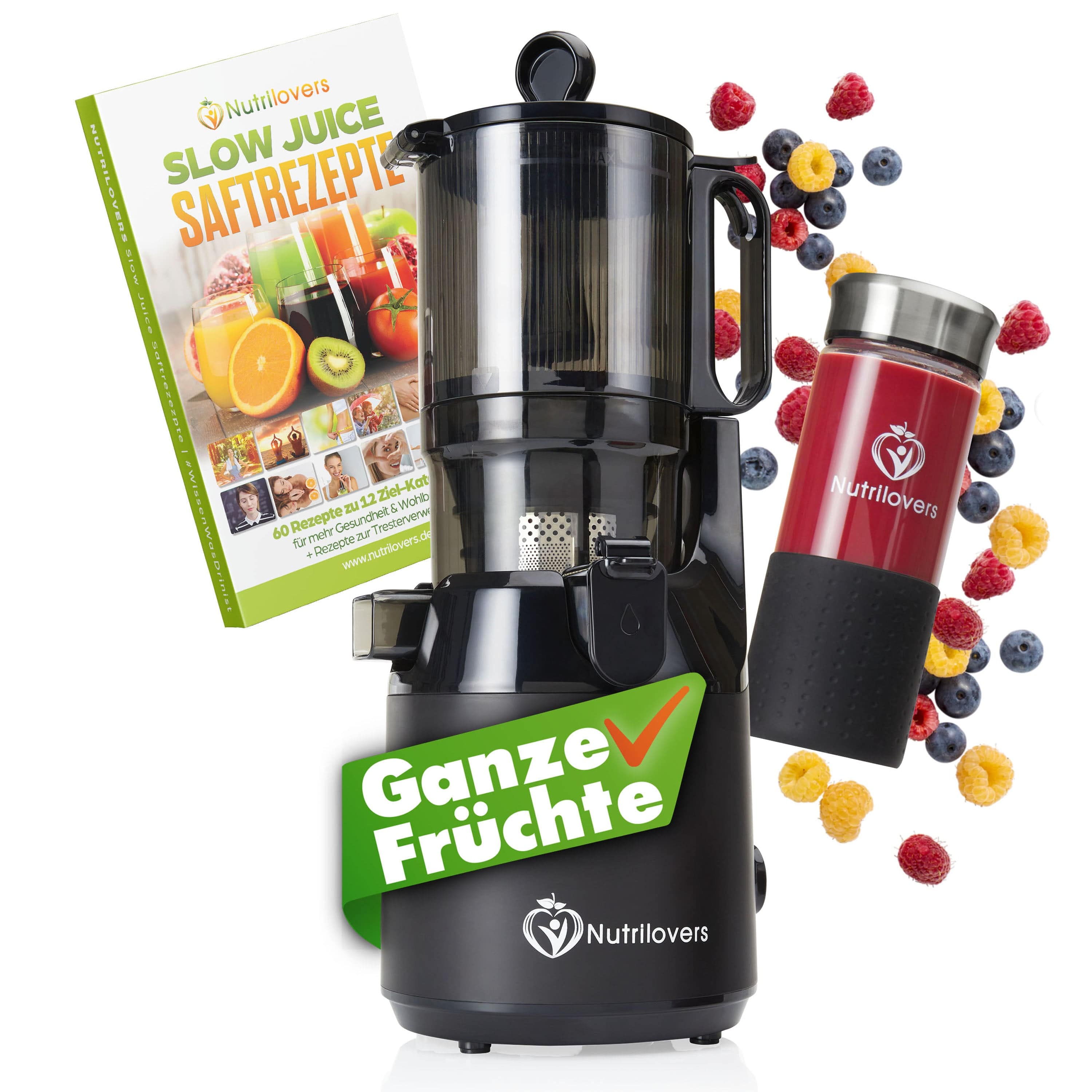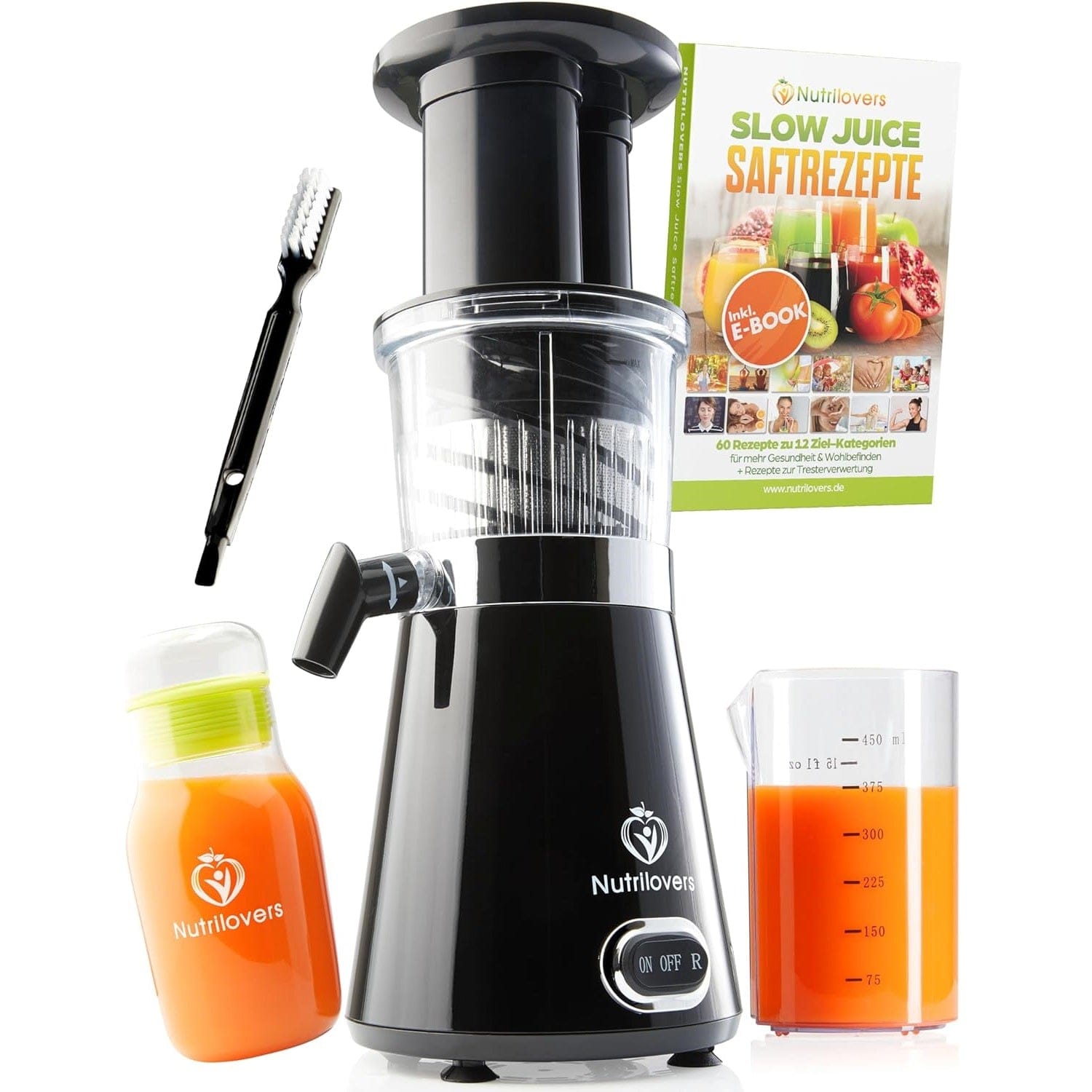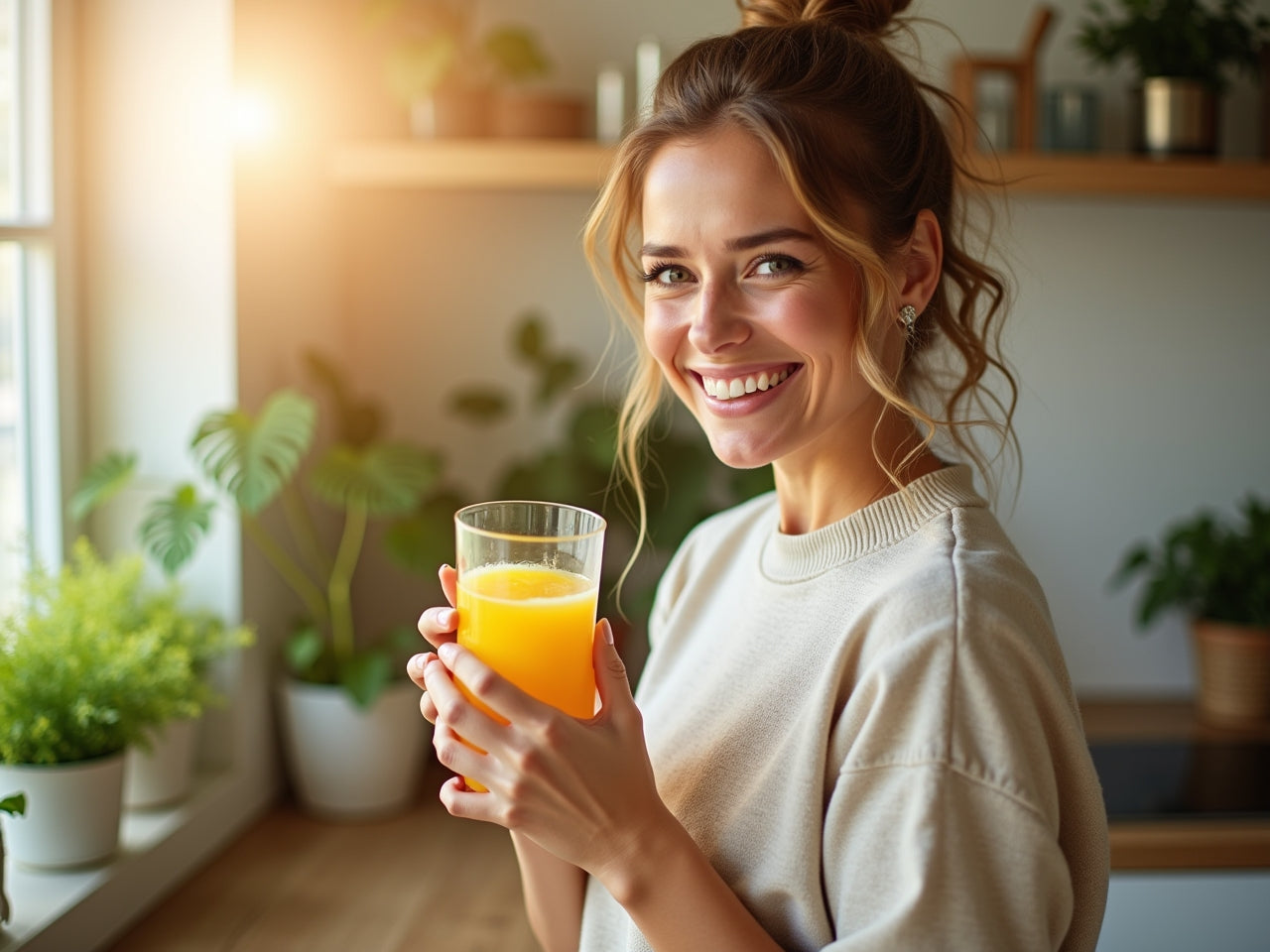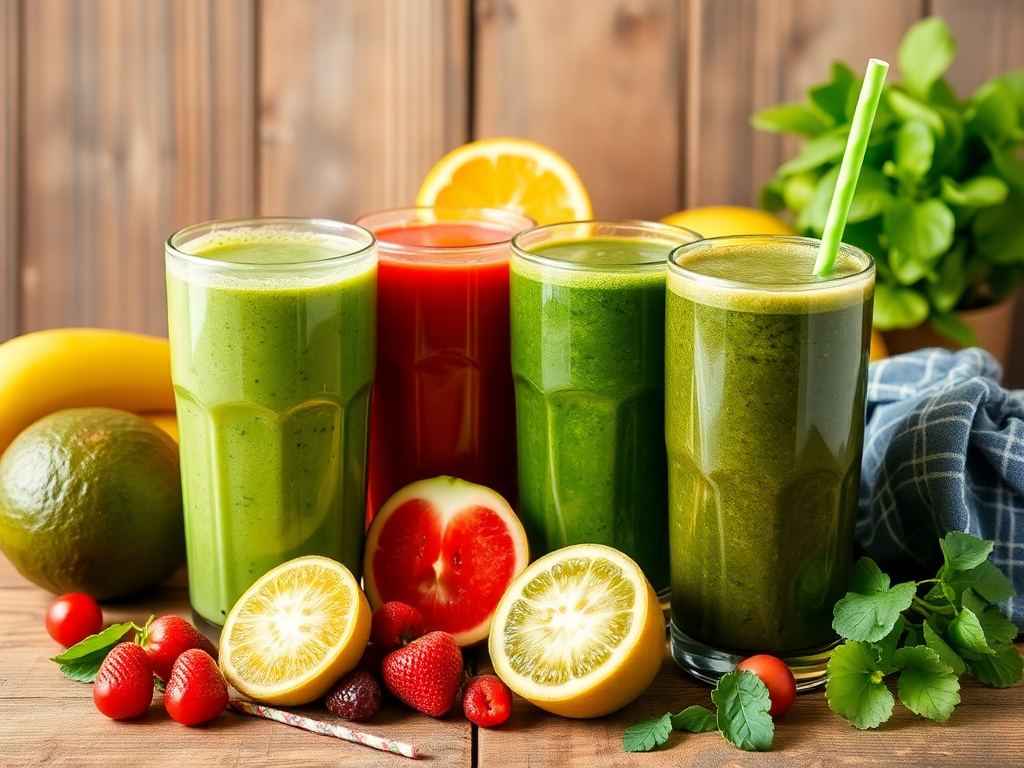If you want to make fresh, self-pressed juices and achieve the maximum vitamin content and juice yield, you should use a slow juicer – a special version of an electric juicer that gently juices fruit and vegetables according to the slow juicing principle.
Choosing the right slow juicer isn't always easy. To help you decide, we've listed the 10 most important points to consider when buying a slow juicer:
1. Revolutions per minute
Older slow juicers operated at up to 70 revolutions per minute. Modern machines now juice at just 45 rpm. The rule of thumb here is: the lower the speed, the better, as these revolutions generate heat, which damages the vitamins in the fruit and vegetables. The slower the machine rotates, the more vitamins, minerals, and cell structure are preserved.
2. BPA-free
It's important that all plastic parts that come into contact with the juice are BPA-free (i.e., do not contain bisphenol A) and that all parts have been tested for food safety. Tritan or ULTEM, which are BPA-free, are commonly used.

3. Low wattage
More watts, more power is better?
Not with a slow juicer.
For a slow juicer, 150–350 watts is the maximum wattage you should look for. This is less about energy efficiency than about juicing really slowly.
4. Press screw (vertical vs horizontal)
In vertical juicers, the auger is vertically oriented. It has a thread that rotates and presses the fruit and vegetables to be juiced. This vertical orientation allows for less pressure during filling, drawing the juice into the auger, and leaving less pulp stuck to the juicer.
In a horizontal slow juicer, the auger is aligned horizontally and presses for a longer time. A horizontal slow juicer is ideal for extremely fibrous fruits and vegetables, such as celery, and leafy, difficult-to-press produce such as lettuce, cabbage, wheatgrass, herbs, etc.
(More on the topic: Vertical vs. Horizontal Slow Juicer)

5. Individual parts
Individual parts should be available for purchase separately. Perhaps the juice bowl accidentally falls to the floor and cracks, or the device isn't cleaned thoroughly and then unused for a while, causing mold to form somewhere under the silicone. In that case, it's great that you don't have to buy a new, innovative device right away, but can simply buy the components.

6. Sieves
Machines that come with two or even three sieves are better, as they allow more control over the consistency of the juice. With or without pulp? A fine sieve for juices, a coarse sieve for smoothies, and, in top-of-the-line models, a smooth sieve for making sorbet, ice cream, nut milk, or soy milk.

7. Cleaning & Handling
The device should be easy to disassemble and reassemble. Operation and handling should be simple. Typically, the devices only work if everything is correctly assembled, which provides additional safety. The individual parts should be easy to clean, and the device should include cleaning brushes for hard-to-reach corners.

8. German customer support

When purchasing a slow juicer, we strongly recommend making sure that you receive first-class German-speaking customer support.
Since slow juicers contain more parts than smoothie blenders or mini blenders and assembly is somewhat more complex, it's very important to have quick access to assistance. A seemingly bargain from Chinese suppliers like Aicok can quickly become a flop. A user manual in clear German and, ideally, instructional videos are therefore highly recommended.
9. Return function
The forward and reverse function is a very practical feature that you absolutely shouldn't do without. The reverse function helps when pressing if pieces are blocking the press mechanism. These can then be easily released. This function is also very helpful for cleaning.

10. Accessories
Practical accessories such as juice container with drip stop for a always clean work surface, insert for frozen ingredients, a pestle, a large capacity pulp container, a cleaning brush, a stainless steel sieve, Various recipe suggestions are a big plus.

CONCLUSION
Cold-pressed juices are incredibly healthy and have a particularly positive effect on your health and well-being. If you want to maximize the vitamins and juice yield when juicing, there's no way around a high-quality slow juicer. The most important decision you have to make these days is whether you want a horizontal or vertical slow juicer.
Read more:
If you've already decided that a slow juicer is right for you because you want to do more for your health, we recommend the following article on the topic: Vertical vs. Horizontal Slow Juicer (click here for the article) .
Recommended test sites for slow juicers:
www.saftland.com
www.entsafter-top10.de
www.slow-juicer-test-redaktion.de
To check out Nutrilovers Slow Juicer click here :
Click here for NUTRILOVERS Slow Juicers
Or visit our shop on Amazon:
www.amazon.de/nutrilovers

